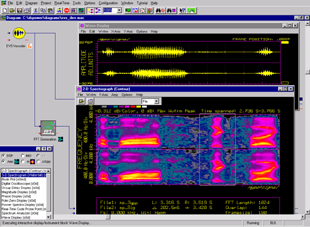
|
| The HPC EVS voice codec is intended for high capacity, high reliability VoLTE (Voice-over-LTE) telecom systems |
EVS Codec (EVS Audio and Voice Codec)
- Overview
- Product Info
- Product Description -- EVS Features
- Capacity Figures
- Applications and API Interface
- Test and Measurement
- mediaTest Demo
- Why Signalogic ?
- coCPU™ Solution
- 3GPP Source Modifications
- 3GPP Reference Codes
- Related Applications
- How To Get a Quote
- Related Items
- Tech Support
Overview
The EVS Codec (Enhanced Voice Services Codec) is a new generation of HD voice codec standardized by 3GPP for VoIP and VoLTE applications 1. The HPC EVS codec is Signalogic's optimized and robust implementation optimized for Linux x86 servers, fully compliant with 3GPP standards and intended for use in high capacity, high reliability telecom, Web IT, and enterprise systems. The HPC EVS codec is deployed in major carriers and networks, including SBC and Lawful Interception 2 applications. Here are key reasons why:- Extreme high capacity
- Easy to use -- runs on standard x86 Linux servers, simple APIs callable from C/C++ applications
- Reasonable cost -- Signalogic uses AI methods to automate the optimization and testing process, resulting in a lower inherent cost basis
- Ultra secure -- developed and tested entirely in the US, in labs based in north Texas and the Bay Area, with no outsourcing. Cyber and security reviews of source code can be arranged 3
2 More information on the DeepLI™ Lawful Interception product ◳
3 Depending on business case discussions under NDA The HPC EVS codec is a library module in SigSRF software ◳, which includes packet, streaming, voice, algorithm, diagnostic, inference, and other library modules. SigSRF combined with EVS and other codecs offers solution functionality including:
- Telecom Mode or Analytics Mode Operation
- Transcoding RTP packets or audio frames
- Complete packet flow, including pcap or UDP I/O, packet and ptime handling, jitter buffer, voice algorithms, and numerous RFCs
- Extreme x86 server high session capacity
- Ready to run for key applications including SBC, Lawful Intercept, and Media Gateway
- XDAIS compliant -- can be mixed and matched with other SigSRF codecs, signal processing, and deep learning modules
- Optional c66x coCPU™ solution for SWaP constrained x86 servers and ultra high density per-server situations
Product Info



|
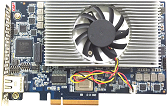
|

|
| Signalogic Part P/N's | DSSIG-EVS-CODEC, DHSIG-CIM32-PCIe, DHSIG-CIM64-PCIe |
| System Manufacturer |
Signalogic |
| Description | HPC EVS Voice Codec |
| Product Categories | HPC (High Performance Computing), Media Resource Functions, Algorithms |
| Product Status | New Introduction |
Default tab content (this text) shown when (i) no tabs are automatically selected, or (ii) if rel value for the tab ="#default".
Stock: 0
On Order: 0
Delivery: Electronic (secure download)
Qty 1: Request Quote
MOQ: 1
Current Promotions: None
Product Description - EVS Features
|
Sampling Rates (kHz) |
8, 16, 32, 48 |
|
Mode / Bandwidth (Hz) |
NB (Narrowband) / 20 - 4000 WB (Wideband) / 20 - 8000 SWB (Super Wideband) / 20 - 16000 FB (Fullband) / 20 - 20000
|
|
Bitrates (kbps) |
NB 7.2, 8, 9.6, 13.2, 16.4, 24.4 WB 7.2, 8, 9.6, 13.2, 16.4, 24.4, 32, 48, 64, 96, 128 SWB 9.6, 13.2, 16.4, 24.4, 32, 48, 64, 96, 128 FB 6.4, 24.4, 32, 48, 64, 96, 128 NB & WB VBR (Variable bitrate) Average of 5.9 |
|
Jitter Buffer |
Both internal JBM and SigMRF voice framework JBM are supported |
|
Multithreading |
Fully re-entrant and multichannel, XDAIS compliant |
|
DTX, SID, CNG |
Supported. DTX (VAD) can be applied at SDP level on per |
|
PLC |
Advanced PLC (Packet Loss Concealment) techniques supported. |
|
Framework Options |
Can be used with SigMRF voice framework software to enable |
|
2G/3G Compatibility |
AMR-WB Compatibility Mode |
|
Bit-Exactness |
Bit-exact libraries are available with approx 30% reduction in |
|
3GPP EVS code version |
v13.3 |
RF Channel Aware Mode
To support high definition voice in LTE enabled networks, the EVS codec provides a "channel aware" mode of operation that applies state-of-the-art packet loss concealment (PLC) techniques against channel induced bit errors, both single bit and burst. In the case of telecom and enterprise applications, the mode is also referred to as "RF channel aware" as in this case bit errors may occur in transmissions between cell towers, basestations, and handsets, WiFi connections, and other RF links in the transmission chain. Paraphrasing from "Improved error resilience for VoLTE and VoIP with 3GPP EVS channel aware coding" ◳ (*): The newly standardized 3GPP EVS speech codec contains a highly error resilient mode called "channel aware". Compared to prior generation codecs, EVS' channel aware mode offers significantly improved error resilience in voice communication over packet-switched networks such as Voice-over-IP (VoIP) and Voice-over-LTE (VoLTE). Error resilience is achieved using a form of in-band forward error correction (FEC) and source-controlled coding techniques to identify candidate speech frames for bitrate reduction. The process described in the article leaves available bits for transmission of partial copies of prior frames, while still maintaining the required bitrate. Even in the case of lost or discarded primary frames -- which tends to be the end result of bit errors in packet switched networks -- voice quality stays within an acceptable range. The article gives MOS test results to demonstrate this voice quality robustness. (*) Authors V. Atti, D.J. Sinder, S. Subasingha, and V. Rajendran, as published in "Acoustics, Speech and Signal Processing (ICASSP), 2015 IEEE International Conference on" on 24Apr15Capacity Figures
For combined capacity figures including the HPC EVS codec and full packet I/O and processing, see section 5.0, High Capacity Operation, in SigSRF Documentation ◳ for more information. Figures are given for two (2) EVS wideband streams and one (1) AMR-NB stream per session, running on an HP DL380 16-core reference server (Xeon E5-2660 R0, 2.2 GHz). For codec only figures, the following table gives per core capacity figures for x86 (2.2 GHz, Xeon E5-2660 R0, 32 nm) and c66x (1.6 GHz, C6678 v2.0, 45 nm). All figures are physical core, not hyperthreaded or virtual core. For any figures in the table not yet uploaded, please inquire.|
Per Core EVS Codec |
Bitrate (kbps) |
|||||
|
5.9 |
7.2 |
9.6 |
13.2 |
|||
|
Sampling Rate (kHz) |
8 |
x86 |
|
|
|
33 |
|
c66x |
31 |
38.7 |
29.5 |
32 |
||
|
16 |
x86 |
|
|
|
30 |
|
|
c66x |
27.8 |
34.8 |
25.9 |
29 |
||
|
32 |
x86 |
|
|
|
|
|
|
c66x |
|
|
|
23.2 |
||
|
48 |
x86 |
|
|
|
|
|
|
c66x |
|
|
|
|
||
|
Platform EVS Codec Capacity Figures 2 |
Number of CPUs |
Clock Rate (GHz) |
Capacity |
|
|
Platform |
1U server with sixteen (16) x86 cores 3 |
2 | 2.2 | 480 |
|
1U server with 128 c66x cores 4 |
16 | 1.6 | 3712 | |
|
ATCA board 5 |
20 | 1.25 | 3625 | |
3 Xeon E5-2660 R0 at 2.2 GHz
4 C6678 at 1.6 GHz
5 C6678 at 1.25 GHz
Applications and API Interface
The HPC EVS codec is suitable for the following applications:- Session Border Controllers (SBCs)
- Lawful Intercept
- Test equipment such as Network Analyzers and VoLTE simulators
- Media gateways
- WebRTC
- Frame data, for basic encode and decode, independent of packet flow (requires voplib and HPC EVS codec shared libraries)
- Packet data, including jitter buffer, ptime handling, tone detection, and other RTP and RTCP packet flow processing (requires SigSRF software and HPC EVS codec libraries ◳)
- Complete analytics or telecom mode packet flow includidng session create/delete, multiple packet/media threads, and stream group support (requires SigSRF software and HPC EVS codec libraries ◳)
Test and Measurement
mediaMin and mediaTest are reference user applications based on SigSRF ◳ (Streaming Resource Function) modules. mediaMin and mediaTest include:- C/C++ source code, as a starting point or reference for user applications
- Supports standard x86 Linux servers
- Performance benchmarking for encoder + decoder, encoder-only, and decoder-only
- Command line entry for encoder bitrate, channel aware, DTX (VAD), and number of concurrent sessions
- Waveform file formats .wav, .tim, and .cod supported
- Header full and compact header payload format modes supported
- Transcoding with other codecs, including G711, G729, EVRC, AMR-NB and AMR-WB, and Opus
- Real-time packet I/O including UDP and pcap. IPv4 and IPv6 UDP/RTP transport is supported, as are session setup, management, statistics, event / packet logging
mediaTest Demo
The SigSRF SDK download page ◳ contains free, limited demo version of the mediaTest software for test and measurement purposes, along with several mediaTest command line examples ◳.Why Signalogic ?
Modern HPC methods have changed the nature of optimization. Unlike legacy codec providers, Signalogic approaches high capacity telecom and enterprise applications from an HPC perspective, not only for implementation but for testbed and audio quality control. We use banks of heterogeneous CPU servers to automate portions of the optimization process for HPC libraries, including highly complex applications such as real-time image analytics (for example, see the c66x OpenCV page ◳). This is called "automated programming" and is one of the exciting new areas of AI you will hear about over the next few years. In the case of speech transcoding such as EVS, the objectives are relatively simple compared to other applications, so we can apply our new techniques in their early stages -- and the capacity results speak for themselves. In addition to increasing capacity and reliability, this approach eliminates the need for low-cost, inexperienced, outsourced engineering software labor, which by its very nature is both a security risk and a quality control problem. In addition to the HPC EVS codec, Signalogic has an established position in telecom and related enterprise applications with a range of software components currently deployed, including:- SigSRF packet/media/analytics software ◳
- DeepLI™ Lawful Interception solution ◳
- SigMRF framework ◳, high performance network stacks, and other codecs
3GPP Source Modifications
The HPC EVS codec consists of three (3) 3GPP source code libraries (encoder, decoder, and common) modified to be:- XDAIS compliant, including memory allocation/usage and API interface
- Fully re-entrant, through use of state structs. All global vars, OS calls, and fixed resources eliminated
- Performance optimized
coCPU™ Solution
For extreme SWaP applications, a coCPU™ EVS solution is available. coCPU means shared processing between x86 and Texas Instruments c66x cores, using c66x PCIe cards added to standard x86 Linux servers. More information on Signalogic's HPC solutions for servers with combined TI and Intel CPUs is available on the HPC Overview ◳ and NFV Transcoding ◳ pages on TI's website. For cloud native applications, the coCPU solution is compatible with Linux based NFV transcoding solutions using KVM + QEMU, virtIO, and fully virtualized coCPU hardware including c66x PCIe cards, with 64 c66x cores per PCIe card (cards are single slot thickness, multiple cards can be added to each server). There is also an ATCA blade solution, with 160 c66x cores and PowerPC control plane CPU. Below is a list of platform and CPU combinations supported by the coCPU solution:|
Platform and CPU |
coCPU |
|||
|
None 1 |
C6678 |
Other c66x 2 |
||
|
Host |
x86 |
Server 3 |
Server 3, 4 |
|
|
PPC |
|
ATCA 3 |
Embedded |
|
|
ARM |
|
|
Embedded |
|
2 Includes C6670, C6657, TCI6608, TCI6614, TCI6614, TCI6618
3 Supported by mediaTest
4 Includes rackmount 1U, 2U, etc. and small form-factors such as mini-ITX ◳ Below is a packet data flow diagram showing coCPU packet data flow and network I/O options available to user applications and the mediaTest demo application:
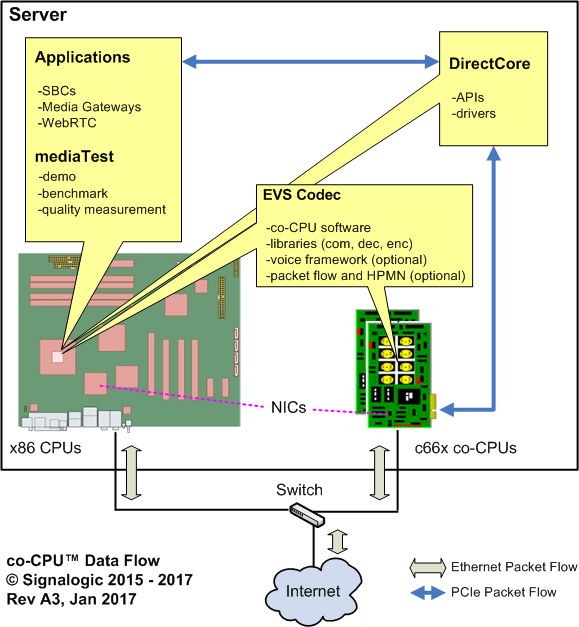 |
| coCPU™ packet data flow and network I/O options using the mediaTest demo app or user applications |
3GPP Reference Codes
3GPP reference C codes are available online in fixed-point ◳ and floating-point ◳ code bases. The 3GPP codes are not intended for commercial use, instead serving two fundamental purposes (i) generic C code that can be ported and optimized for specific CPUs and platforms, and (ii) "bit exact" comparison to ensure correct results after any changes are made. The following requirements must be addressed for commercial operation:- Concurrent encode and decode
- Multichannel operation
- High capacity operation (i.e. with extensive optimization)
Related Applications
The HPC EVS voice codec can be used with the following related applications:How to Get a Quote
Enter the fields shown above, including:- CPU Type
- License Type
- Product Configuration
Related Items
| 1) Codec Wav Samples, before and after encode/decode ◳ |
| 2) mediaMin and mediaTest demo ◳ |
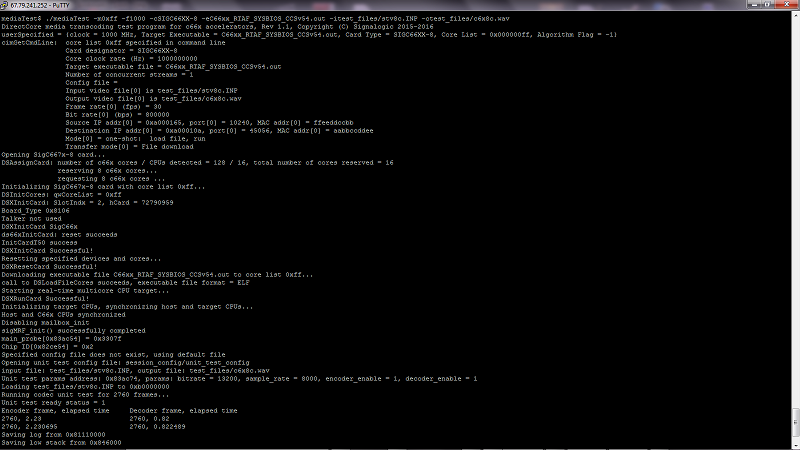
|
| mediaTest high capacity media session transcoding screen capture, showing EVS performance benchmarking in diagnostic mode |
| 3) Surveillance Video Suspect Detection and Tracking ◳ |
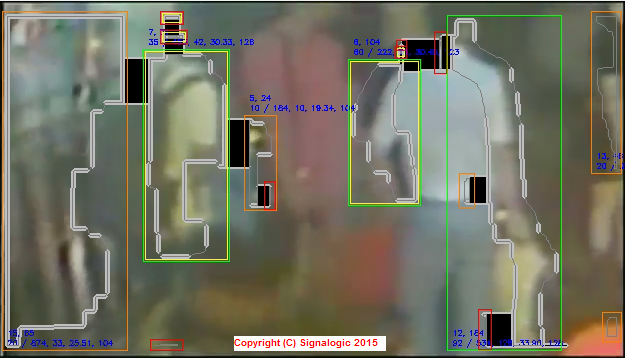
|
| Vidilant suspect detection software screen capture of surveillance video analysis |
| 4) ffmpeg Acceleration ◳ |
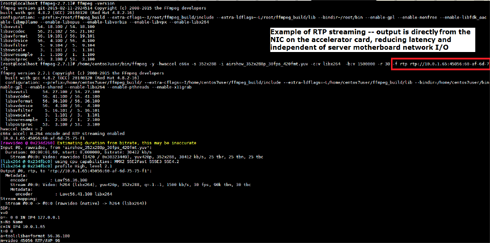
|
| FFmpeg screen capture with c66x acceleration enabled |



